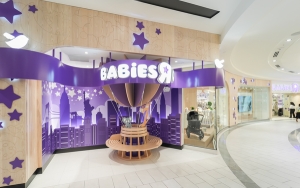Total retail loss is an alarming drain on the revenue of retail companies. Driven by common occurrences like shrink, returns, administrative, marketing, e-commerce and supply chain errors, external theft and employee fraud, it can have serious repercussions to margins that are already tightened by the pandemic. As such, the threat of retail loss compels companies to spend millions of dollars each year in an effort to mitigate its effects while not impacting consumer satisfaction. In light of this considerable time and capital expenditure, tracking the productivity and performance of these initiatives is critical to ensuring a satisfactory return on investment.
Below, I share effective methods leading retailers are taking to reduce total retail loss and how organizations can measure the productivity of their loss prevention efforts in order to remain on target.
Incorporating Technology into Company Culture
The National Retail Federation’s 2020 National Retail Security Survey found that 36% of retailers planned to increase their loss prevention budget last year. Therefore, it’s unsurprising that brands are increasingly turning to technology as their first step to minimizing total retail loss. Physical solutions like CCTV and security tags have been critical tools to identifying both internal and external theft in real time over the last few decades.
To identify retail loss before it occurs, brands are investing in advanced solutions that granularly analyze sales, inventory and supply chain data to uncover where and when it happens — allowing retail managers to take prescriptive action. For instance, consider an e-commerce brand’s customer service center experiencing a sudden rise in suspicious returns. Advanced analytics solutions can benchmark the number of online returns processed by specific customer service representatives. Should the solution identify an outlying rate of return exceeding the benchmark by a predetermined number of standard deviations, thus indicative of fraud, it will immediately alert a manager to the situation and even share prescriptive next steps to alleviating it.
In addition to its impact on retail crime, advanced analytics can also mitigate loss throughout the supply chain. As the Evergreen Ship ordeal in the Suez Canal proved on a global scale, transportation delays can result in millions of dollars in lost revenue. However, advanced solutions can analyze everyday variables like weather, traffic patterns, driver performance and global events to re-route deliveries and streamline logistics to avoid inventory loss. By leveraging AI-driven automation offered by advanced analytics solutions, loss prevention efforts can be made precisely at every level of retail without missing a beat.
Combined with the integration of new technologies, developing greater awareness of retail loss to employees — ranging from the c-suite to in-store associates — can be a powerful catalyst of change. When brands nurture an overall culture of accountability, employees become one of their greatest means to combat retail loss. This can be accomplished through enhanced customer service training to provide employees with the tools to identify and then remediate internal and external fraud, administrative errors, inventory inaccuracy, vendor noncompliance and the other 36 categories of Total Retail Loss. When employees feel confident in their ability to handle a situation in the moment, they are more likely to speak up and act to serve as another layer of protection against retail loss.
Measuring Performance for Long-term Success
Retail loss mitigation efforts aren’t complete once new technologies are installed or new policies implemented. The retail industry is constantly evolving, meaning the retail loss threats companies face are changing as well. To deliver long-term results, brands must continually monitor and adjust their loss prevention programs to ensure performance and productivity. One way they can monitor is by tracking key performance indicators. For real-time monitoring, there are several KPIs organizations assess to gain a comprehensive overview of their loss mitigation efforts’ performance. This includes:
? Shrink (Expected inventory / observed or counted inventory)
? Inventory accuracy
? Sales increase/decrease (by volume and dollars)
? Return rate
? Other indicators at the register such as revenue reducing activities, including coupon stacking, discounts, manual overrides and more
In addition to tracking KPIs to remain on-target, a key way for brands to keep a pulse on their loss mitigation efforts is to seek out employee feedback whenever possible. Employees are the eyes and ears in warehouses, stores and customer service command centers. By simplifying the sharing of feedback on their loss prevention experiences — whether through an employee portal or simply an open door policy with their managers — organizations can quickly adapt their processes to create greater agility and results. The sense of personal responsibility for their organizations’ success will also secure greater buy-in and contribute to a robust company culture of accountability.
With profit margins tighter than ever before, every dollar counts for retailers in today’s industry environment. Enacting a comprehensive and data driven loss prevention program can make or break their success. However, in order to make the most of new technologies and policies, retailers must effectively and routinely measure them for performance. In doing so, they can give themselves the opportunity to make vital adjustments when needed to preserve time, money and reputation.
Business & Finance Articles on Business 2 Community
(62)

